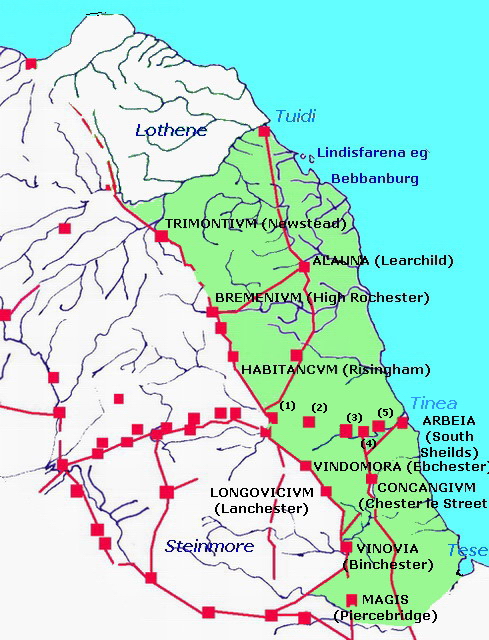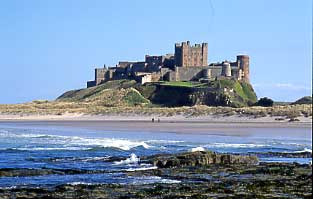Bernicia stretched from the Tees north to the Firth of Forth and, at its greatest extent, to beyond the Solway Firth. There is no agreed derivation for the name. Jackson suggests the Celtic *berna 'gap, mountain pass' which may have developed through *bernia to *bernicia. In this case the name may have been coined for the Stainmoor region. The eastern region was the old tribal land of the Votodani and the Brigantes.
The territory south of
Hadrian's wall would have been under Roman military government until the
collapse of the Imperial government in Britain. Consequently the
newcomers were faced by a British society touched only lightly by Romano-British
civilization. Repeated raids across the region by the Picts before and after the
Roman withdrawal, will have left it impoverished and disorganised.
Consequently the
newcomers were faced by a British society touched only lightly by Romano-British
civilization. Repeated raids across the region by the Picts before and after the
Roman withdrawal, will have left it impoverished and disorganised.
There are strong indications of Celtic survival in the Bernician region and it is possible that the Angles were a small fighting aristocracy seeking to dominate the native population rather than land-seeking settlers.
Lindisfarne (Metcaud) and Bamborough were occupied early. It is probable that
the first foothold was at Bamborough and that the Anglian group that made this
settlement originated in the main Anglian settlement areas in Deira and south of
the Humber.
The name Lindisfarne may contain the name of the Lindiswaras the people from around Lincoln. A second line of penetration seems to have been the Tyne valley from which access was gained to the line of Hadrian's wall. There are nearly contemporary Welsh and Cumbrian accounts of the attempts to eject the Angles or, at least, confine them to the coastal strip.
Ida, the first recorded king of the Bernicians, came to the throne in 547. Royal residences were at Bamborough and Yeavering. An impressive assembly of wooden structures has been excavated at Yeavering. During the reign of Aethelfrith the grandson of Ida, Bernicia and Deira were united and Aethelfrith's successor, Edwin of Deira, ruled both kingdoms from 616 to his death in 632.
